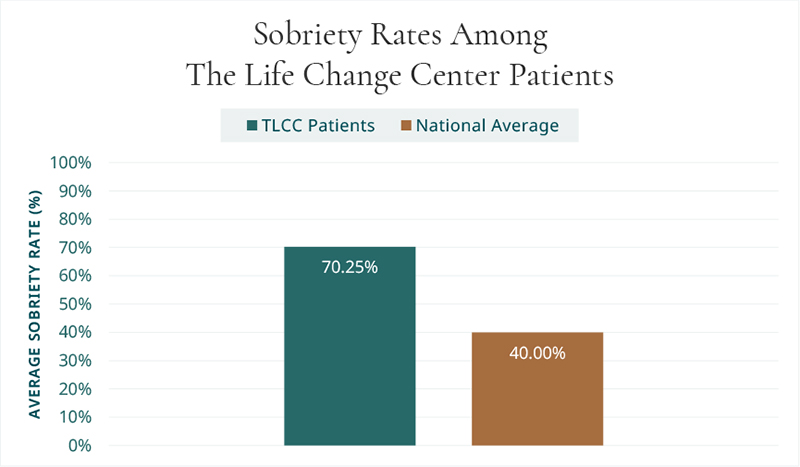Frequently Asked Questions
Important information for those seeking help and those seeking to help.

What is opioid addiction?
Opioid addiction is a complex coupling of drives: the drive to feel the euphoric effects of the drug and the drive to avoid the withdrawal symptoms caused by the drug use.
Opioids, such as fentanyl, heroin, or some prescription pain medications, attach to the highly sensitive opioid receptors in the brain, which stimulate the release of natural brain chemicals such as endorphins and dopamine which produces the pleasurable feelings. After repeated exposure in the brain to the exogenous opioids a physical dependence occurs causing severe withdrawal symptoms. The complexity continues as a person with the opioid addiction develops patterns of staving off the withdrawal symptoms by using more of the drug.
Opioid use often begins as a choice or as a prescribed treatment from a doctor, but frequent use can cause the brain cells to change the way they work. The brain is re-set to think that the drug is necessary for survival. Opioid addiction is characterized by the repeated daily use to “stay well” with intermittent use at higher level to feel the euphoric effects. The need to satisfy cravings or avoid withdrawal can be so intense that people who want to stop taking opioids find this difficult to do. They may find themselves doing things they would not ordinarily do in order to obtain more of the drug they crave. For this reason, even though opioid addiction is a medical condition and not a moral failing, it can drive behavior.
Important FAQs
Fentanyl addiction
Facts about Fentanyl addictions.

Fentanyl is
-
A synthetic opioid that is up to 50 times stronger than heroin and 100 times stronger than morphine.
-
Over 150 people die every day from overdoses related to synthetic opioids like fentanyl.
Fentanyl use
Powdered fentanyl looks just like many other drugs. It is commonly mixed with drugs like heroin, cocaine, and methamphetamine and made into pills that are made to resemble other prescription opioids.
Serious health problems can result from opioid abuse, including:
- Liver and kidney disease
- Bacterial infections
- Collapsed veins
- Pneumonia
- Abscesses
- Organ damage (often caused by toxic additives in opioids)
- Infectious diseases such as hepatitis and HIV
People using opioids report feeling euphoria, warm flushing of the skin, dry mouth, heavy arms and legs, and blurred mental functioning. These effects are followed for several hours by alternating states of feeling awake and then drowsy.
Opioid withdrawal
With regular use, opioid users develop a tolerance to the drug and begin taking larger doses of the drug to feel high. Over time, the body gets used to the drug. If an opioid addict stops using, they can experience severe withdrawal symptoms, including:
- Vomiting and diarrhea
- Muscle and bone pain
- Insomnia or restlessness
- Cold flashes
- Kicking movements
Opioid withdrawal symptoms can begin within hours of the last dose and typically continue for about one week. However, some opioid addicts report withdrawal symptoms that last for months and drug cravings that can be triggered by certain people, places or things even years after stopping opioid use.

The average sobriety rate among TLCC patients in 2023 was 70.25% compared to the national average of 40%.
Opioid detox
Intense cravings during withdrawals are often the cause of relapse when someone is trying to quit. To minimize opioid cravings and the pain of withdrawal, our programs administer medications such as Methadone and Suboxone.
Medically supervised detox programs are designed to help people gradually wean off drugs and prepare them to work a program of recovery. Going through detox without any follow-up care is a recipe for relapse. Opioid detox is just the first step in a longer process of learning new skills and addressing the issues underlying the addiction.
Prescription Medication Addictions
Prescription drug abuse has swept the nation over the past decade. Prescription medications are extremely useful in treating a wide range of ailments, which can give the false impression that these drugs are somehow safe or legal to use other than as directed.
Prescription drug abuse can be defined as taking a prescribed medicine:
- That is not prescribed for you
- In larger dosages than prescribed
- For reasons other than the condition it is prescribed for
- In ways other than prescribed (ie: crushed and snorted or injected rather than swallowed)

Most abused prescription drugs.
Here are the basic facts about some of the most abused prescription drugs.
Opiates
Opiates, also called prescription narcotics, are generally prescribed to relieve pain. They can be swallowed, but users often snort or inject crushed pills for a faster, more intense high. These routes of administration have been linked to a number of fatal overdoses. Opiate abuse can lead to drowsiness, confusion, constipation, low blood pressure and depressed breathing.
When trying to quit opiates, addicts often experience painful withdrawal symptoms such as muscle and bone pain, insomnia, diarrhea, vomiting, cold flashes, restlessness and involuntary kicking movements.
Some of the most commonly abused opiates include:
- Hydrocodone (Vicodin)
- Oxycodone (Percodan, Percocet and OxyContin)
- Propoxyphene (Darvon)
- Hydromorphone (Dilaudid)
- Meperidine (Demerol)
- Diphenoxylate (Lomotil)
- Morphine
- Fentanyl
- Codeine
Central Nervous System Depressants
Depressants, also known as tranquilizers and sedatives, are typically prescribed for anxiety and sleep disorders. As a result of their effect on the GABA neurotransmitter, depressant abuse can slow brain function and heart rate. When used with other drugs, especially alcohol, the combination can lead to serious breathing problems and even death.
The main categories of depressants are:
Barbiturates
Barbiturates treat tension, anxiety and sleep disorders. Examples include:
- mephobarbital (Mebaral)
- pentobarbital sodium (Nembutal)
Benzodiazepines
Benzodiazepines are prescribed to treat panic attacks, acute stress, convulsions and short-term sleep problems. Examples include:
- diazepam (Valium)
- chlordiazepoxide HCl (Librium)
- alprazolam (Xanax)
- triazolam (Halcion)
- estazolam (ProSom)
When an individual stops using depressants, slowed brain activity rebounds, sometimes racing out of control to cause seizures. Because withdrawal from certain depressants can be life-threatening, detox should be supervised by a physician or medical professional.
Addicted to Prescription Drugs
Dependence on prescription drugs is characterized by tolerance (needing more of the drug to experience the same effects) and withdrawal (physical symptoms when trying to quit using prescription drugs).

People who are addicted to prescription drugs also become psychologically dependent, experiencing drug cravings and compulsive drug-seeking behavior. They continue to abuse prescription medications despite negative effects on their health, career, relationships and finances.
Prescription drug addicts may find themselves stealing drugs from other people’s medicine cabinets, forging prescriptions or visiting multiple doctors to obtain more drugs. Although prescription drugs are legal when taken as prescribed for a valid medical purpose, when abused they are just as dangerous as illegal drugs.
Opioids, such as some prescription pain medications or heroin, attach to the opioid receptors in the brain, which stimulate the release of dopamine and produce pleasurable feelings. When the opioid eventually detaches from the receptors, people experience withdrawal and cravings and have a strong need to repeat the experience. The need to satisfy cravings or avoid withdrawal can be so intense that people who want to stop taking opioids find this difficult to do. They may find themselves doing things they would not ordinarily do in order to obtain more of the drug they crave. For this reason, even though opioid dependence is a medical condition and not a moral failing, it can drive behavior.ff

